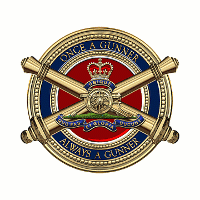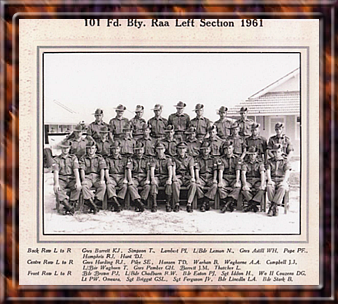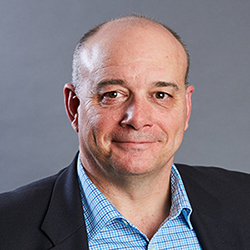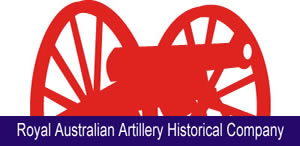|
||||||||||||||||||||||||||||||||||||||||||||||||||||||||||||||||||||||||||||||||||
| Have a Question / Feedback ? | Submit | Search Our Site |
|
| AUSTRALIAN GUNNER OBITUARY RESOURCE |
| |||
 |
|
|
||||||
| By Peter Bruce OAM | ||||
Harry was one of three children born to Harriet and Edward Iddon at Bolton in the North of England. He was still a schoolboy when WWII broke out but eventually gained an apprenticeship as a fitter and turner. Once eligible, Harry joined the Home Guard and thus commenced a lifetime association with the military. At the age of 18, Harry joined the British Army and in 1945 was posted with the Royal Lincolnshire Regiment to Burma and India. Harry rose to the rank of Lance Corporal and discharged in 1947. He then became a policeman stationed in London – much to the distaste of his parents. During this time Harry married and in 1950 he and his then family immigrated to Australia, leaving London on 17 March 1950.
They arrived in Fremantle Western Australia on 15 April 1950 but did not stay in the west. Harry moved on to Sydney where he found work as a Tramway Inspector. Soon after, he found work on the Snowy Mountains Hydro-electricity Scheme as a surveyor. By late 1951 Harry had had enough of this and enlisted in the Australian Army, Regular Army Special Reserve (K) on 10 December 1951. “K Force” as it was known was an Australian Government initiative to bolster troop numbers where individuals could sign on for three years which included a year in Korea. He was taken on strength with 5 Recruit Training Company where he remained until January 1953. It was here that Harry transferred to the Australian Regular Army on 25 February 1952. Harry was then posted to the School of Infantry in January 1953 and from there to the School of Tactics and Administration where he stayed until May 1953. Harry had achieved the rank of Corporal at this stage and was then employed as an instructor at 11th National Service Training Battalion until April 1954. It was at this point that Harry had his first posting to an Artillery unit, arriving in 1st Field Regiment on 20 April 1954. This was not to be a long posting with the Gunners and on 31 May 1954, Harry returned to the Infantry with a posting to 4th Battalion, the Royal Australian Regiment.
By 1955 the Korean War had escalated to the point where Australia had committed two Infantry Battalions. No Artillery units were deployed to Korea however many individual Gunners were attached to either of the two battalions. Harry deployed to Korea with the 1st Battalion, Royal Australian Regiment on 12 January 1955. After 441 days on Active Service in Korea, Harry finally returned to Australia on 27 March 1956 and was posted to Wacol in Brisbane. Harry was employed as an instructor with 11th National Service Training Battalion at Wacol in Brisbane.
In September 1959, Harry deployed with 101st Field Battery to Malaya. The Battery arrived in Malaya and took over duties from “A” Field Battery. Initially based at Butterworth, the Battery later came under command of 26th Field Regiment Royal Artillery and moved to Terendak Camp near Malacca. Harry was employed as a Gun Sergeant with Delta Troop.

101st Battery returned to Australia in October 1961 and Harry was posted to 1st Field Regiment, then located at Holsworthy in Sydney. He remained at Holsworthy until a posting to 7th Field Regiment at Willoughby in May 1963. In June 1966, Harry returned to a regular Artillery unit with a posting to 4th Field Regiment at Wacol in Brisbane. He was posted as the Battery Sergeant Major of 106th Field Battery which like the remainder of the Regiment were training for operational deployment to Vietnam. In September 1966, Harry moved across to become BSM of Headquarters Battery and deployed to South Vietnam with that Battery on 30 April 1967. Returning to Australia in April 1968, Harry was posted to another Army Reserve Unit; 15th Field Regiment in Victoria. The Regiment had a Headquarters at Dandenong and a second gun battery in Frankston. The Victorian climate may not have suited Harry and he moved back to Queensland in July 1968 with a posting to the Jungle Training Centre at Canungra in South East Queensland. It was here that Harry completed his Administration and Technical Course (A and T Course) and was commissioned Lieutenant.
Harry spent several months in Brisbane with Headquarters Southern Queensland Area before moving south again for his first posting as an officer in the RAA. His first appointment was to the Proof and Experimental Establishment at Graytown. Harry remained there as a Proof Officer until May 1972 when he joined 9th Light Anti-Aircraft Regiment on promotion to Captain. He was the Quartermaster (QM) for the Regiment for nearly three years. In June 1975 Harry moved to 2nd Training Group at Ingleburn. Harry’s final posting was as the Administration Office (AO) of District Support Unit Liverpool. Harry retired from the Army as a Major on 13 March 1980.
Harry’s Honours and Awards include the General Service Medal with Clasp Malaya; Vietnam Medal; Australian Service Medal 1945-75 with Clasp Korea; Australian Defence Medal; Long Service and Good Conduct Medal; Vietnamese Campaign Medal; Pingat Jasa Malaysia and Returned from Active Service Badge. Acknowledging his British Army service from 1944 to 1950, Harry was also entitled to the 1939-45 Star, Burma Star, Defence Medal and War Medal 1939-45.
Acknowledgments:
- Notes from the late Arthur Burke’s files
- David Troedel for his work on notes of all 101 Battery Personnel.
 |
||||
webmaster@artilleryhistory.org




